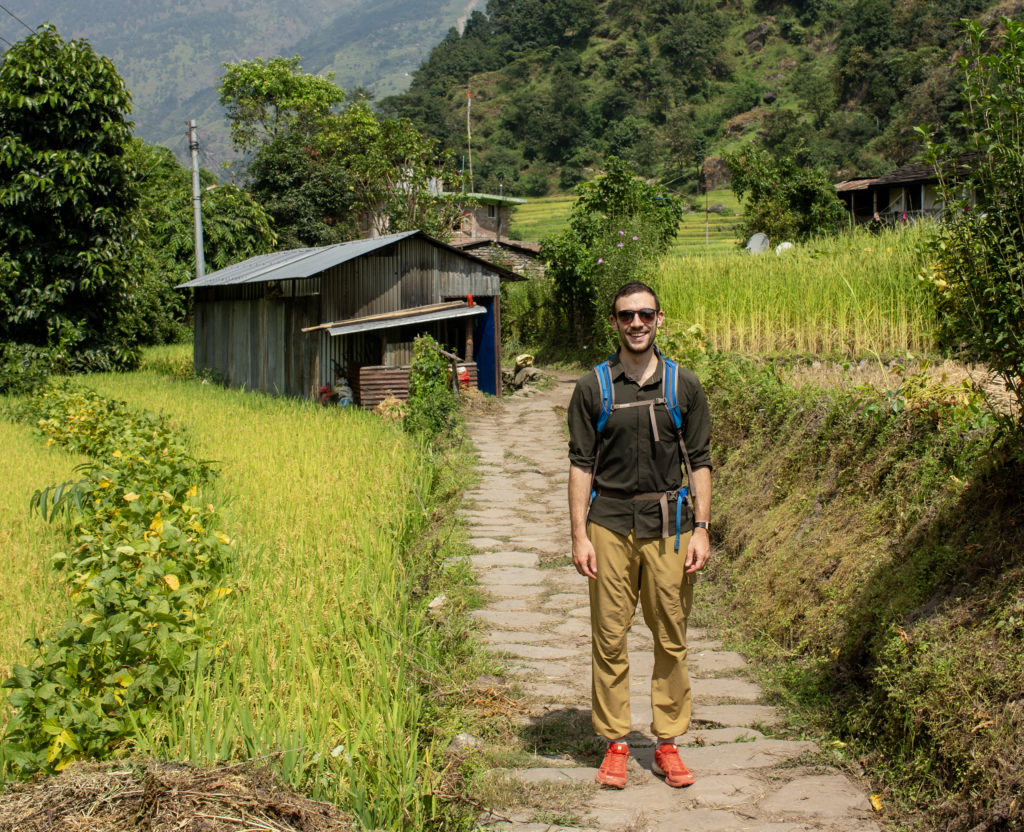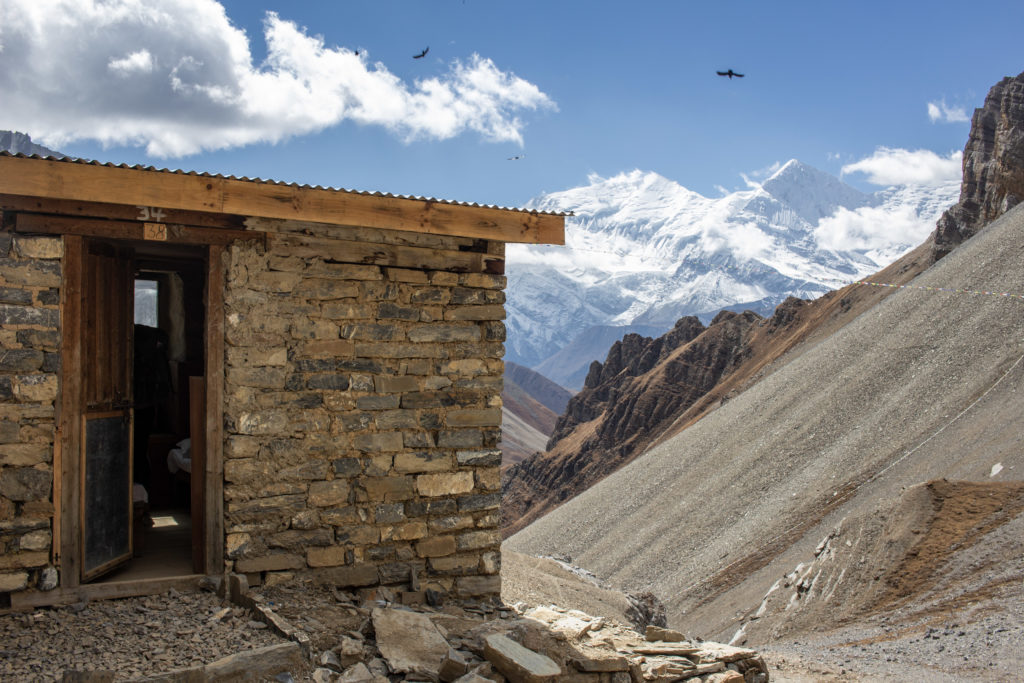Annapurna Circuit Advice

While hiking the Annapurna Circuit, I learned a thing or two about how to get the most out of my experience with the trail and surrounding area. Not only that, but because this route has become so commercialized and popular with first-time backpackers, I witnessed plenty of examples of what I think is the “wrong” way to do it. As always, Hike Your Own Hike applies, but I think my advice below can help anyone on the Annapurna Circuit have the best experience in terms of natural beauty, cultural discovery, and comfort.
1. Go all the way from Besisahar to Naya Pul on Foot
A lot of resources on the web for the Annapurna Circuit talk about the negative impacts the recent construction of a road along the trail have had on the hiking experience. Many of those resources agree that the road makes it no longer worthwhile to complete the entire traditional route from Besisahar to Naya Pul, and recommend that hikers skip portions via jeep or airplane. You can read in my journals that I shared on my trip report that I also didn’t always enjoy walking along the road, but I still think the entire hike is more than worthwhile to complete on foot.
There are beautiful places to visit every day on this trail, and it would be a shame to miss any of them, especially because most of my favourite towns were only accessible on foot, and the potholed roads in the area make travel by bus or jeep so slow and bumpy that I would always rather just walk. Besides, the road can often by avoided by hiking on side trails, which brings me to my next piece of advice.
2. Use the NATT side trails
In response to the negative impacts the new road has had on hiking, the local land management agency, the Annapurna Concervation Area Project (ACAP), starting building and marking a system of New Annapurna Trekking Trails (NATT) that allow hikers to stay off the road. While the network wasn’t totally complete by fall 2018, it was pretty close. The trails are marked with red/white blazes and easy to follow for hikers with even a little navigation skill. I would recommend using the guidebook by Andrées de Ruiter and Prem Rai which you can get on ebook on Amazon. In addition, a PDF of the old edition is available for free on Andrées’ website. I found the guidebook to be incredibly helpful in deciding the most beautiful routes when multiple alternatives were available. For example…
3. Take the high route to Ghyaru
At around the 70km mark of the trail, hikers have the option of taking the “low route” via Lower Pisang or the “high route” via Upper Pisang. The latter is more physically strenuous and presents a challenge in terms of altitude, so most hikers avoid it. For me, the area around the village of Ghyaru on the high route was the most beautiful of the whole trail, and would be a shame to miss, even if it means you have to hike up one extra hill and deal with a bit of altitude sickness. Plus, the little villages up there are so peaceful away from the road and the crowds of tourists.
An added benefit of taking the high route is that it gives you the opportunity to acclimatize to the altitude you’ll have to deal with on the way up to Thorung La a few days later. Even if you have to deal with a bit of altitude sickness on the way up to Ghyaru, you’ll come down from the high route feeling strong, and Thorung La Pass will feel relatively easy for you compared to those that stayed on the low route.
4. Don’t stay at the most popular hotels
In most villages on the Circuit, there are a few options for accommodations. My experience was that the majority of the hikers around me would all crowd into the same hotels, presumably based on a recommendation from the ubiquitous Lonely Planet guidebook or their hired guide. The thing is, despite the recommendation, that crowded hotel was never the only nice place to stay in town; there were always a few solid options. Not only that, but I always found my worst experiences on the circuit involved being stuck in the middle of a crowd of tourists. At those busy hotels, we often had to wait a long time for our food and it was tough to get the attention of staff if we needed anything. Plus, I always find big groups of tourists to be obnoxious. Maybe that’s a hypocritical or elitist thing to say.
A lot of my fondest memories of my time on the Circuit were of staying in the quieter hotels in the smallest villages, spending time interacting with the innkeeper and their family through broken English and Nepali and feeling the warmth of their humble hospitality. So my advice is this: When you arrive in the village you plan to spend the night in, take a walk around and check out your hotel options. If you see one that looks charming, go inside and politely ask the innkeeper if they have a room available. If they’re friendly and the place looks clean enough, stay there. My favourite hotels were always the ones with the friendliest staff.
5. Eat Dal Bhat
Nepalese people traditionally eat a dish called Dal Bhat twice a day every single day, which is obviously a pretty unusual habit from the western point of view. It’s a platter made of rice, lentil soup, curried vegetables, and a pickle, and it’s delicious if you ask me. All of the hotels on the Circuit will offer an extensive menu of Chinese, Indian, and western dishes to appeal to the varied palate of tourists, but I would recommend you stick to Dal Bhat. Like I said, it’s delicious and healthy, and innkeepers will be happy to give you another full serving to make sure you feel full. But more importantly, eating Dal Bhat will immerse you in the local culture, letting you feel a little more at home on these traditional inter-village walking routes you’re making your pilgrimage on. Why distance yourself from the Nepalese people by not enjoying the one and only local food? “When in Nepal…”
6. Hike up to Poon Hill at a time other than sunrise
When you’re nearing the end of your trek in the village of Ghorepani, you have the option of taking the very popular short side trip to the top of Poon Hill. It’s one of the most famous viewpoints in Nepal, with an awesome panorama of Dhaulagiri, the Annapurnas, and Machapuchare. When I was there, it seemed that every tourist in Ghorepani that night woke up before dawn to make the short but steep trip up to Poon Hill and watch the sunrise. While it was a pretty spectacular sight, I think the chaos of sharing the view with literally hundreds of other people made it pretty unenjoyable. If I were to go back, I would definitely go back up to Poon Hill to take in the views, but I would do it later in the morning when the crowds had left and I had the opportunity to take it all in in peace.
In summary:
When I was reviewing this post, I realized that the six points I covered above are pretty much all variations of the same bit of advice: Don’t get caught up in the hustle and bustle of the tourist experience on the Annapurna Circuit. Take the time to enjoy the area and everything it has to offer, including its people, villages, landscapes, and food. Remember that you’re just a visitor on this pathway that has been used by locals for a long time to live their lives and get around in this beautiful place. Look around, use your own judgement instead of following the crowd, and Hike Your Own Hike.
